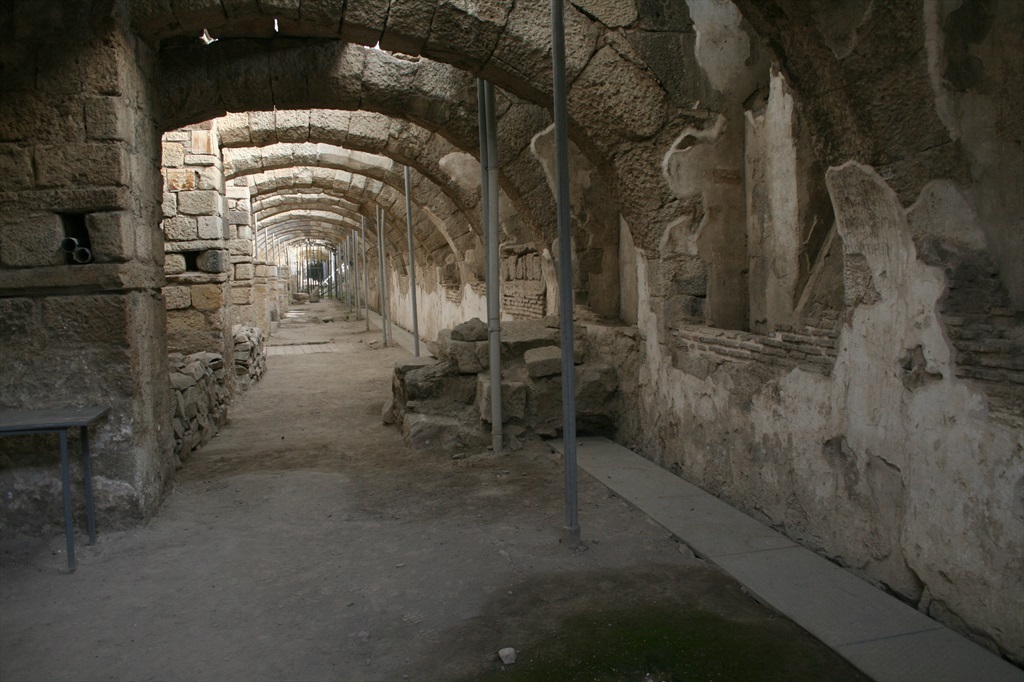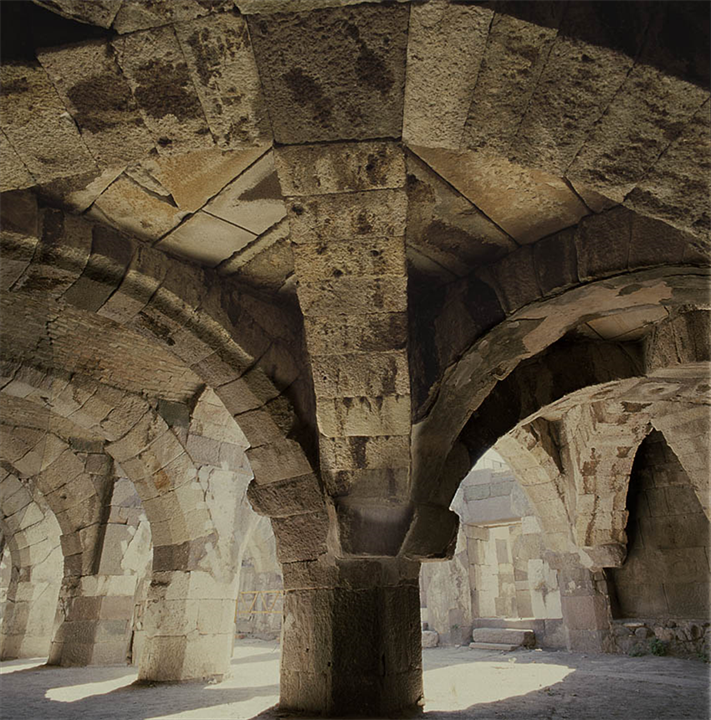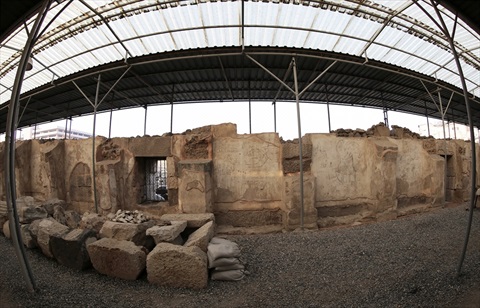Smyrna Agora Basilica
Basilicas were used for judiciary business as well as commerce. Latin poet Martialis writes that trials held in basilicas utilized water clocks to determine speaking times for claimants and defendants. He also says lawyers would bring many supporters in, and these people would cheer for or against the parties during trials.
This basilica structure you're looking at was built on foundations of a single-storey double-gallery stoa over a basement, which was built at the same spot in Hellenistic period. Two more galleries were added in Roman period and this final four-gallery form was achieved. First and second galleries towards south were covered with 55 arches and straight stone plaques placed on top of these arches. Arches are made of cut limestone. Groined vaults at east and west ends of these galleries are rare construction elements from the period. Third gallery features 63 small spaces with foundations made of rubble stone. These spaces are thought to be stores for products made of bones, glass, and ceramic. Fourth gallery is basically a series of spaces of various sizes.
There are two gates of monumental form providing access to the basilica from Agora North Street. Northeast and northwest doors of the basilica connected Agora to the North Street and the city via Basilica.
Agora Basilica was repaired a few times in Roman period. It was largely refurbished after the big earthquake in 177-178, and achieved this final form. As of 7th century, this structure wasn't in use anymore.
Most significant feature in these galleries is the Graffitos, engraved and painted imageries and inscriptions depicting almost all aspects of daily life in Roman period. Excavation run by Akın Ersoy who is instructor in Katip Çelebi University.













Comments
No comment left, would you like to comment?